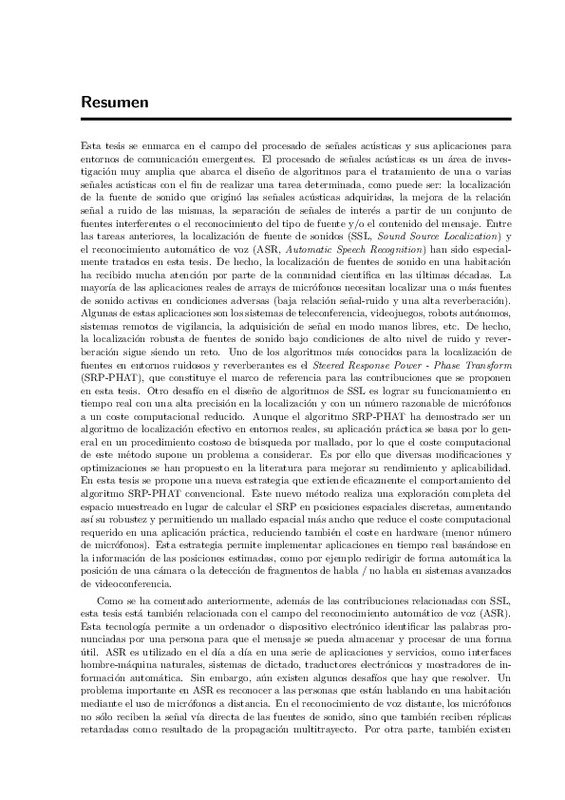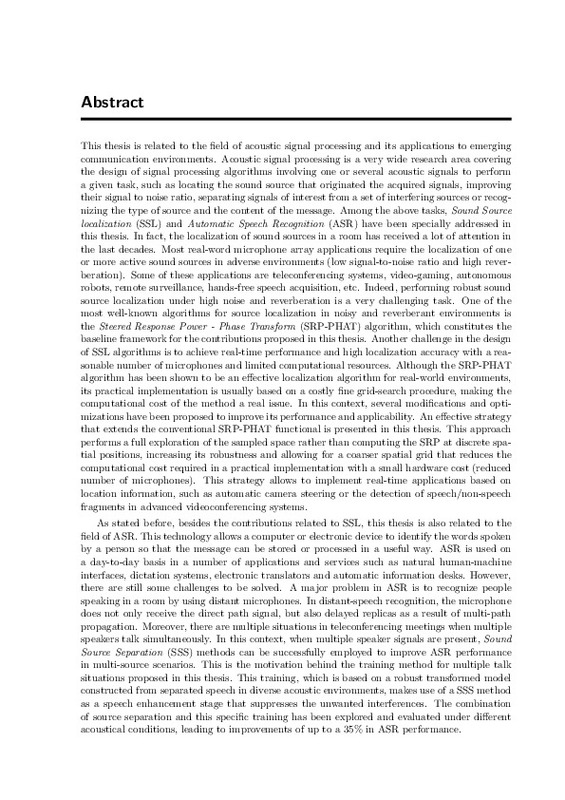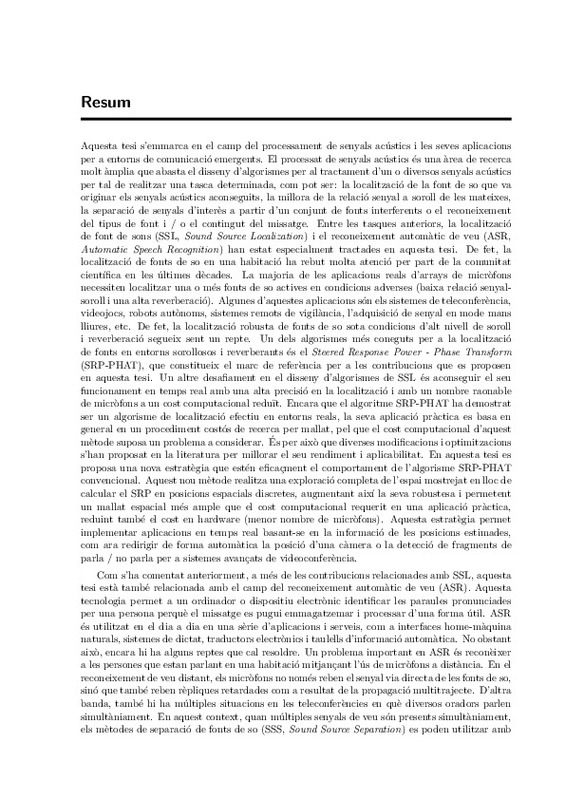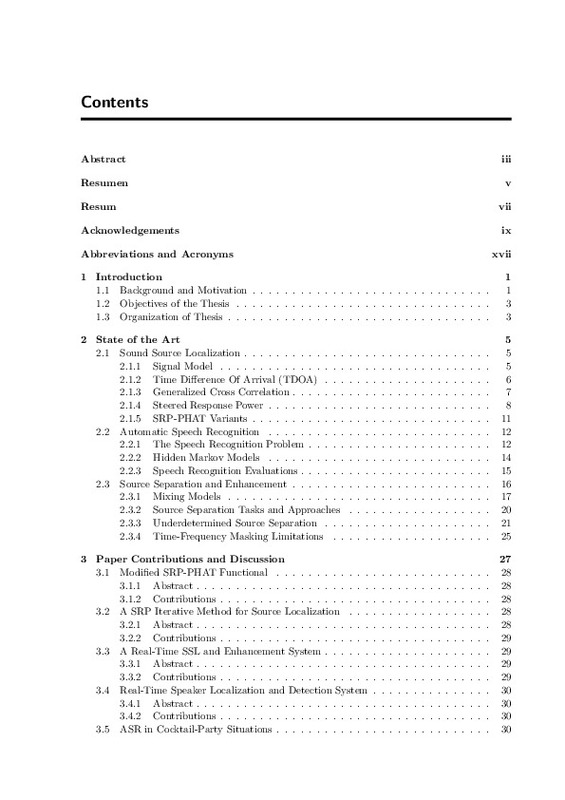|
Resumen:
|
This thesis is related to the field of acoustic signal processing and its applications to emerging
communication environments. Acoustic signal processing is a very wide research area covering
the design of signal processing ...[+]
This thesis is related to the field of acoustic signal processing and its applications to emerging
communication environments. Acoustic signal processing is a very wide research area covering
the design of signal processing algorithms involving one or several acoustic signals to perform
a given task, such as locating the sound source that originated the acquired signals, improving
their signal to noise ratio, separating signals of interest from a set of interfering sources or recognizing
the type of source and the content of the message. Among the above tasks, Sound Source
localization (SSL) and Automatic Speech Recognition (ASR) have been specially addressed in
this thesis. In fact, the localization of sound sources in a room has received a lot of attention in
the last decades. Most real-word microphone array applications require the localization of one
or more active sound sources in adverse environments (low signal-to-noise ratio and high reverberation).
Some of these applications are teleconferencing systems, video-gaming, autonomous
robots, remote surveillance, hands-free speech acquisition, etc. Indeed, performing robust sound
source localization under high noise and reverberation is a very challenging task. One of the
most well-known algorithms for source localization in noisy and reverberant environments is
the Steered Response Power - Phase Transform (SRP-PHAT) algorithm, which constitutes the
baseline framework for the contributions proposed in this thesis. Another challenge in the design
of SSL algorithms is to achieve real-time performance and high localization accuracy with a reasonable
number of microphones and limited computational resources. Although the SRP-PHAT
algorithm has been shown to be an effective localization algorithm for real-world environments,
its practical implementation is usually based on a costly fine grid-search procedure, making the
computational cost of the method a real issue. In this context, several modifications and optimizations
have been proposed to improve its performance and applicability. An effective strategy
that extends the conventional SRP-PHAT functional is presented in this thesis. This approach
performs a full exploration of the sampled space rather than computing the SRP at discrete spatial
positions, increasing its robustness and allowing for a coarser spatial grid that reduces the
computational cost required in a practical implementation with a small hardware cost (reduced
number of microphones). This strategy allows to implement real-time applications based on
location information, such as automatic camera steering or the detection of speech/non-speech
fragments in advanced videoconferencing systems.
As stated before, besides the contributions related to SSL, this thesis is also related to the
field of ASR. This technology allows a computer or electronic device to identify the words spoken
by a person so that the message can be stored or processed in a useful way. ASR is used on
a day-to-day basis in a number of applications and services such as natural human-machine
interfaces, dictation systems, electronic translators and automatic information desks. However,
there are still some challenges to be solved. A major problem in ASR is to recognize people
speaking in a room by using distant microphones. In distant-speech recognition, the microphone
does not only receive the direct path signal, but also delayed replicas as a result of multi-path
propagation. Moreover, there are multiple situations in teleconferencing meetings when multiple
speakers talk simultaneously. In this context, when multiple speaker signals are present, Sound
Source Separation (SSS) methods can be successfully employed to improve ASR performance
in multi-source scenarios. This is the motivation behind the training method for multiple talk
situations proposed in this thesis. This training, which is based on a robust transformed model
constructed from separated speech in diverse acoustic environments, makes use of a SSS method
as a speech enhancement stage that suppresses the unwanted interferences. The combination
of source separation and this specific training has been explored and evaluated under different
acoustical conditions, leading to improvements of up to a 35% in ASR performance.
[-]
|













